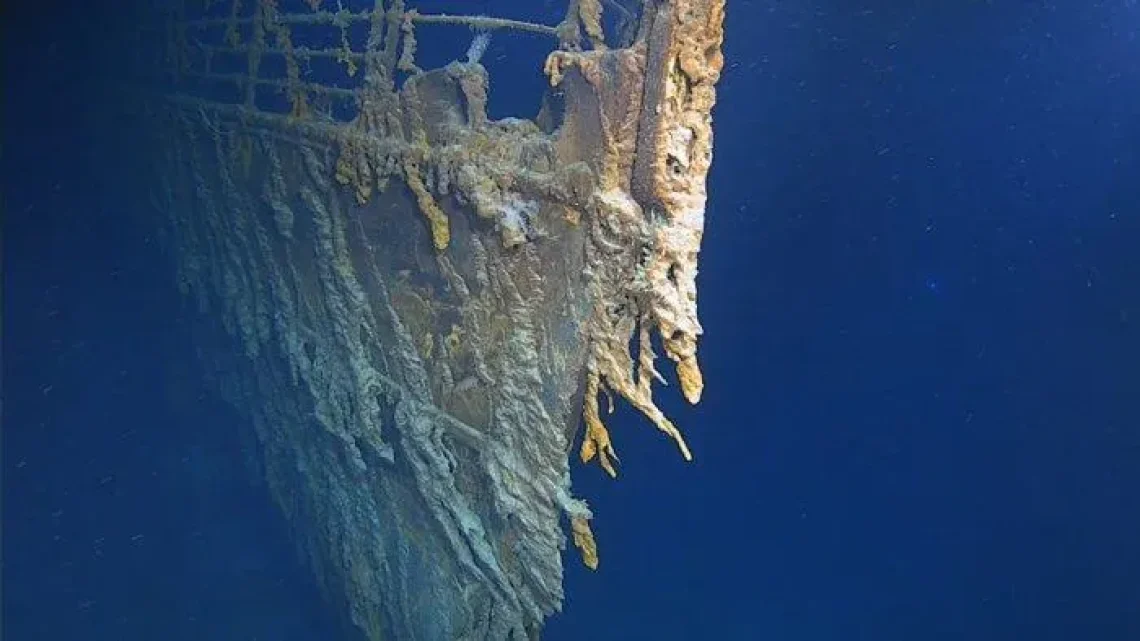
Titanic’s Decay Unveiled: Railing Lost and Statue Rediscovered
September 3, 2024A recent expedition has highlighted the ongoing deterioration of the Titanic’s wreck, revealing significant changes after more than a century under the Atlantic Ocean. The iconic image of the ship’s bow emerging from the depths has now shifted, with a large section of railing—immortalized by Jack and Rose in the famous movie scene—now lying on the sea floor.
The expedition, carried out by RMS Titanic Inc, used underwater robots to capture images of the wreck. Tomasina Ray, director of collections at the company, noted that the once-iconic bow no longer looks the same due to continuous decay. “It’s just another reminder of the deterioration happening every day,” she said.
The recently discovered 4.5-meter-long section of railing appears to have detached in the past two years. Previous images from a 2022 expedition, conducted by deep-sea mapping firm Magellan and documentary makers Atlantic Productions, showed the railing buckling before it finally gave way.
The Titanic, resting 3,800 meters deep, faces ongoing degradation. Microbes are eroding the metal structure, forming rusticles—stalactite-like formations of rust. Past expeditions, such as those led by explorer Victor Vescovo in 2019, revealed further collapse, including damage to the officer’s quarters and the loss of features like the captain’s bath.
During the summer expedition, two remotely operated vehicles (ROVs) captured over two million images and 24 hours of high-definition footage. The footage will be used to create a detailed 3D digital scan of the wreck and its debris field, with more images to be released in the coming months.
In a surprising discovery, the expedition also found the Diana of Versailles statue, a bronze figure that had been missing since its initial sighting in 1986 by Robert Ballard, who discovered the Titanic the previous year. The 60 cm-tall statue, once a centerpiece in the Titanic’s first-class lounge, was found face up in the debris field.
James Penca, a Titanic researcher, described the find as “momentous,” emphasizing its historical value. He argued that recovering the statue would help preserve its legacy and bring attention to the history and art associated with the Titanic.
RMS Titanic Inc, holding the salvage rights, plans to return next year to recover more artifacts, including the Diana statue. While some argue that the Titanic should remain untouched as a grave site, Penca believes that rediscovering and displaying such artifacts serves to spark interest and appreciation for history and conservation.
The ongoing exploration of the Titanic underscores the delicate balance between preserving historical artifacts and respecting the site as a maritime grave.

